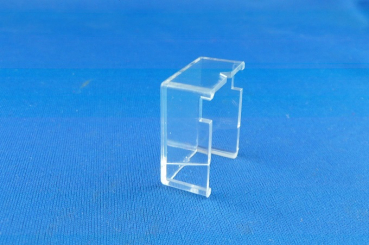(Übersetzt aus dem Englischen ins Deutsche von DeepL--Englisch folgt unten)
Wie gut/genau sind die Dual Stylus Overhang Jigs zum Einstellen der Tonabnehmerposition und -höhe in den Tonabnehmerschlitten für die Tonabnehmerausrichtung? Sie scheinen praktisch zu sein.
Welches Ausrichtungsschema verwenden sie?
Die Reproduktionen, die ich in der Werbung sehe, scheinen sich auf das Schlittenmodell und nicht auf das Plattenspielermodell zu beziehen. Seltsam. Mein 1210 und mein 1229Q verwenden die gleichen Schlitten, aber die Arme sind so unterschiedlich.
Ich habe auf Ebay auch Winkelmesser gesehen, die speziell für den 1229Q (und andere spätere Modelle mit ähnlicher Tonarmgeometrie) angeboten werden. Bieten diese etwas mehr als ein gewöhnlicher Winkelmesser?
Ich habe verschiedene Winkelmesser: Zweipunkt-Winkelmesser mit mehreren Ausrichtungsschemata (Baerwald, Stevenson und Loefgren) mit Linien für die visuelle Ausrichtung mit der Tonarmspindel; Zweipunkt-Winkelmesser mit einem Schema ohne Linien für die Ausrichtung der Tonarmspindel; und Einpunkt-Winkelmesser ohne Linien für die Tonarmspindel. Ich verwende in der Regel den Zweipunkt-Multischema-Winkelmesser und prüfe dann mit den anderen. Meistens stimmen sie alle überein, wenn ich das Baerwald-Schema verwendet habe.
Bei meinem 1210 muss ich normalerweise Baerwald oder Loefgren verwenden, je nach Tonabnehmer; oft kann nur eine der beiden Möglichkeiten konfiguriert werden. Die Möglichkeiten scheinen durch den kurzen Arm begrenzt zu sein.
Übersetzt mit DeepL.com (kostenlose Version)
___________________________________________________________
English
How good/accurate are the Dual stylus overhang jigs for setting cartridge position and height in the cartridge sleds for cartridge alignment? They would seem to be convenient.
What alignment scheme do they use?
The reproductions I see advertised seem to be sold as specific to sled model and not turntable model. Strange. My 1210 and 1229Q use the same sleds but the arms are so radically different.
I have also seen protractors sold on Ebay that are specific to the 1229Q (and other later models with similar tone arm geometry). Do these offer anything more than just an ordinary protractor?
I have a variety of protractors: two point ones with multi alignment schemes (Baerwald, Stevenson, and Loefgren) with lines for visual alignment with the tone arm spindle; two point single scheme ones with no lines for the tone arm spindle alignment; and single point ones with no lines for the tone arm spindle. I generally use the two point multi-scheme protractor, and then check with the others. Mostly they all agree if I have used the Baerwald scheme.
With my 1210, I usually have to use Baerwald or Loefgren, depending upon the cartridge; often only one of the two choices can be configured. Options seem limited by the short arm.


